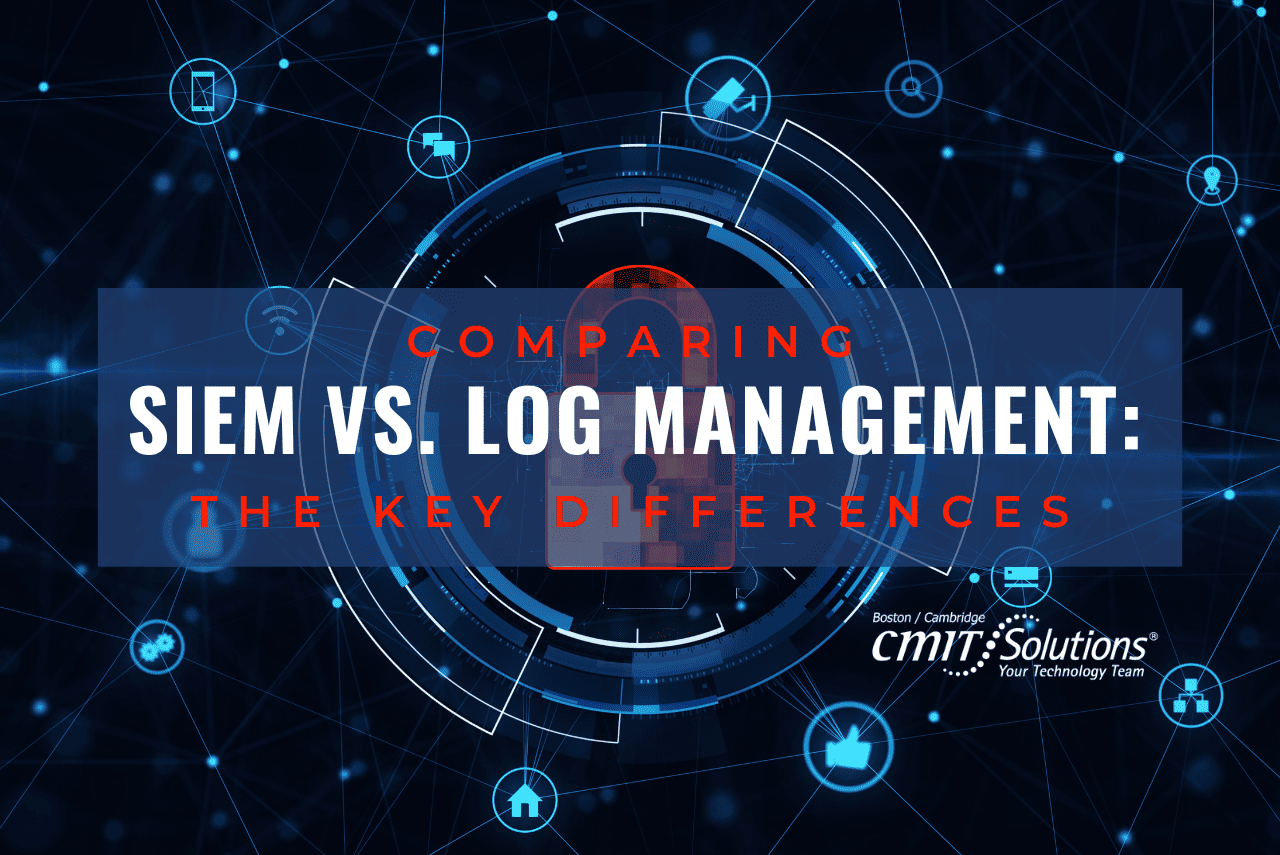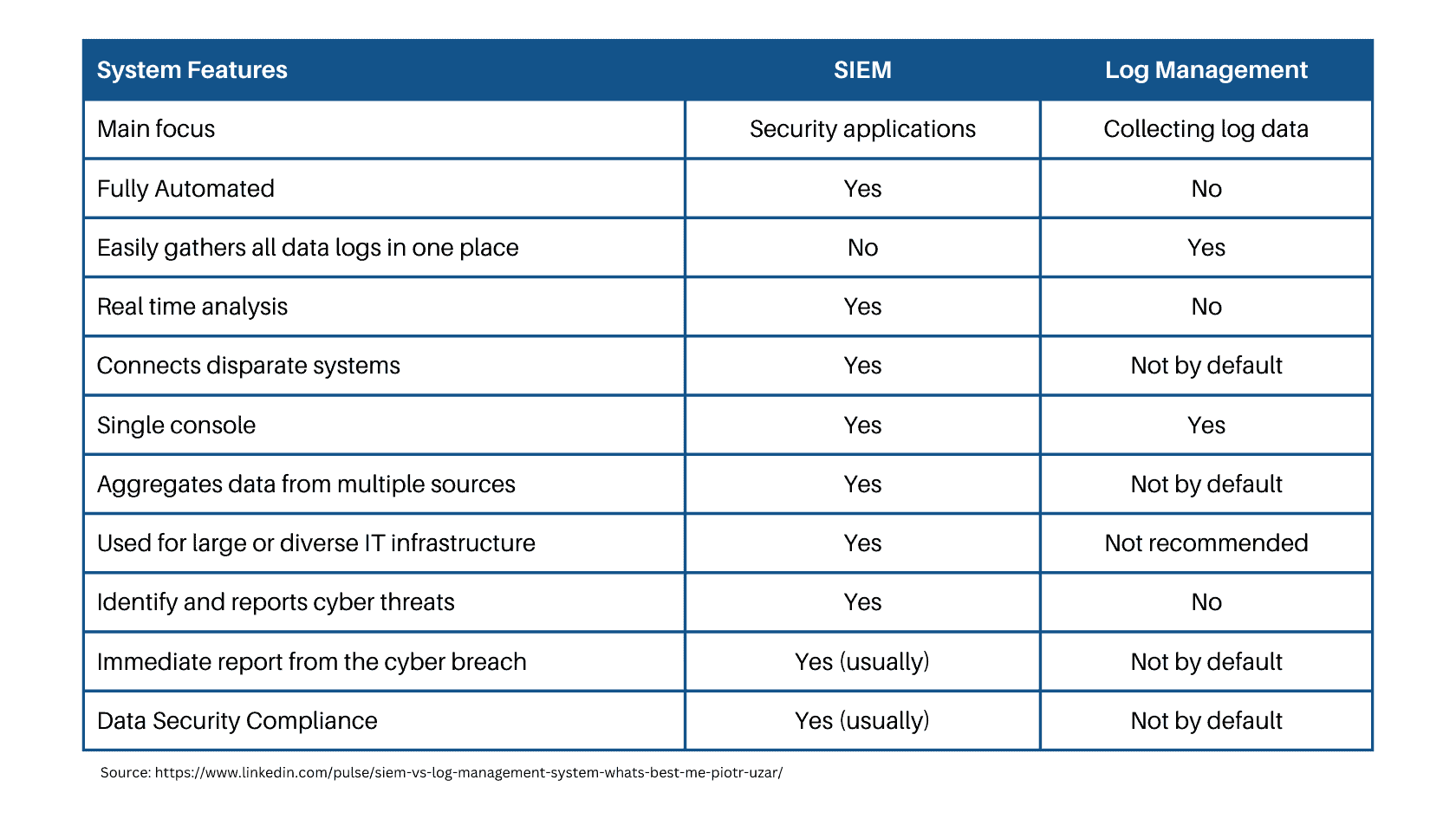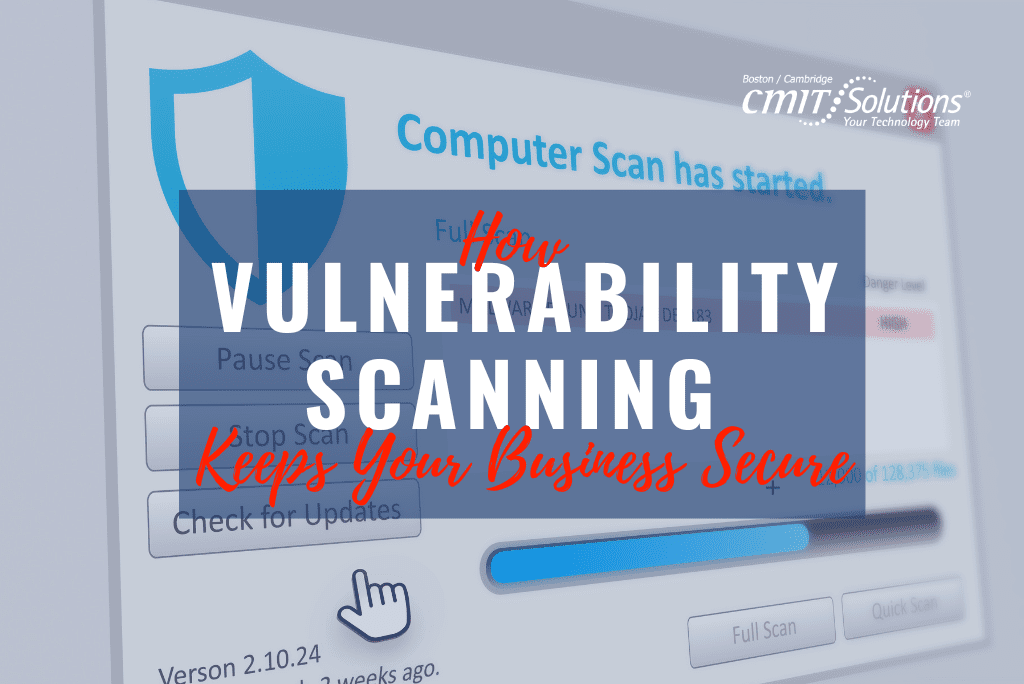Businesses are constantly incorporating new technologies to streamline their processes and improve their proficiency. Security Information and Event Management (SIEM) and Log Management are two technologies that are highly valued for their ability to enhance cybersecurity measures. Despite being used interchangeably, these two technologies are fundamentally different. In this blog post, we compare the key differences between SIEM vs. Log Management to help you understand which technology is more suitable for your business.
SECURITY APPROACH
Only 44% of companies have both a prevention and response plan for IT security incidents according to Atlas VPN. Log analysis is an essential aspect of data security and assists in uncovering vulnerabilities and potential threats that can harm your business. Log Management refers to collecting, analyzing, and storing log data procured from various sources, whereas SIEM is a tool that analyzes log data to identify any security-related events. In essence, Log Management aggregates all your log data in one place, while SIEM takes this data and uses it to manage security risks.
DATA ANALYSIS
Log Management tools enable users to mine historical data to identify operational issues or transactions that may have taken place. On the other hand, SIEM systems focus primarily on real-time data analysis to identify potential security risks and provide fast responses to thwart them.
SCALABILITY
Log Management is highly scalable and adaptable, making it ideal for use in both small and large organizations. It can consolidate data from various disparate sources and normalize events based on specific needs. SIEM’s scalability depends on which SIEM solution you have, but it’s widely known that SIEM requires more resources to process data in real-time.
USE CASES
Log Management tools are primarily used for auditing, compliance, and troubleshooting purposes. They do not have built-in incident response policies and procedures. SIEM solutions, on the other hand, are intended for Security Operation Centre (SOC) use. These tools process large amounts of security event data in real-time and help identify security threats as they occur.
COST
There is no one size fits all answer for this, but the general cost depends on the size of the organization, specific security needs, and technical requirements. Log Management tools tend to be more affordable than SIEM solutions, given their relatively less complex nature. SIEM systems require more resources and provide more functionalities since they process real-time data, store it for an extended period of time, and provide detailed analysis and monitoring. Overall, SIEM provides the better cybersecurity protection.
PROTECT YOUR BUSINESS
SIEM and Log Management are two essential tools that help organizations collect and analyze log data. Both tools serve different purposes and focus on different areas of data analysis. Knowing the key differences between the two will help you determine which one is best for your organization and the outcomes you hope to achieve. While SIEM may be more suited to organizations with a dedicated security team seeking real-time security threat detection, Log Management can be a useful tool for IT teams seeking to troubleshoot issues, investigate incidents, and comply with regulatory requirements. Need to know more? CMIT Boston Cambridge is always here to help you find the best solutions for your organization.
Written by: Chris Zambuto | Chief Information Security Officer @CMITBostonCambridge





